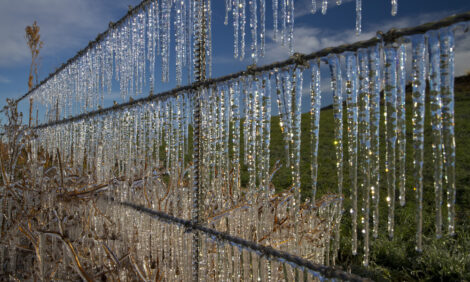



Japan’s Frozen Beef Safeguard Triggered in Q1 of Japanese Fiscal Year
JAPAN - The Japanese government released its June import figures for frozen beef. From this data, it now is clear that imports during the first quarter (1 April - 30 June) of Japan’s fiscal year, from the United States and other countries covered under Japan’s "safeguard" mechanism, were large enough (by a margin of just 113 metric tons) to trigger an increase in the duty charged on imports of frozen beef from these countries.
The rate will increase from 38.5 per cent to 50.0 per cent for the remainder of the current fiscal year (through 31 March 2018).
"USMEF recognises that the safeguard will not only have negative implications for US beef producers, but will also have a significant impact on the Japanese foodservice industry," explained USMEF President and CEO Philip Seng.
"It will be especially difficult for the gyudon beef bowl restaurants that rely heavily on Choice US short plate as a primary ingredient. This sector endured a tremendous setback when US beef was absent from the Japanese market due to BSE, and was finally enjoying robust growth due to greater availability of US beef and strong consumer demand.
"USMEF will work with its partners in Japan to mitigate the impact of the safeguard as much as possible. We will also continue to pursue all opportunities to address the safeguard situation by encouraging the US and Japanese governments to reach a mutually beneficial resolution to this issue."
As agreed to in 1994 in the WTO Uruguay Round, Japan maintains separate quarterly import safeguards on chilled and frozen beef, allowing imports to increase by 17 per cent compared to the corresponding quarter of the previous year.
The duty increases from 38.5 per cent to 50 per cent when imports exceed the safeguard volume. Japan’s frozen beef imports in the 2016 Japanese fiscal year were lower than in previous years, thus the growth in imports during this first quarter of the current fiscal year exceeded 17 per cent, driven in part by rebuilding of frozen inventories and strong demand for beef in Japan’s foodservice sector. The most recent quarter saw strong growth in imports from all of Japan’s main beef suppliers.
The implications for US beef exports are significant because US frozen beef now faces an even wider tariff disadvantage compared to Australian beef. The duty on US frozen beef imports, effective 1 August 2017 through 31 March 2018 will be 50 per cent while the duty on Australian beef will remain at the current rate of 27.2 per cent, as established in the Japan-Australia Economic Partnership Agreement (JAEPA).
The snapback duty of 50 per cent will apply to frozen imports from suppliers that do not have an economic partnership agreement (EPA) with Japan, which are mainly the US, Canada and New Zealand.
Conditions have changed since the quarterly safeguards were established in 1994, and the growth in Japan’s imports this year has not adversely impacted Japan’s domestic beef producers. Prices for wagyu carcasses and wagyu feeder cattle are down from the record highs of last year, but are otherwise the highest in recent history. Japan has also moved away from the quarterly safeguard mechanism in its recent trade agreements.
Through the JAEPA, Japan transitioned from quarterly safeguards to annual safeguards, which are much less likely to be triggered. The snapback duties on Australian beef have also been reduced, minimising any potential impact on trade. Japan also agreed to similar terms in its economic partnership agreement with Mexico and in the Trans-Pacific Partnership (TPP).
Supplemental information on Japan’s imports of US beef and possible implications of the safeguard are available in this brief USMEF fact sheet. Further analysis and charts are also available online.
TheCattleSite News Desk


